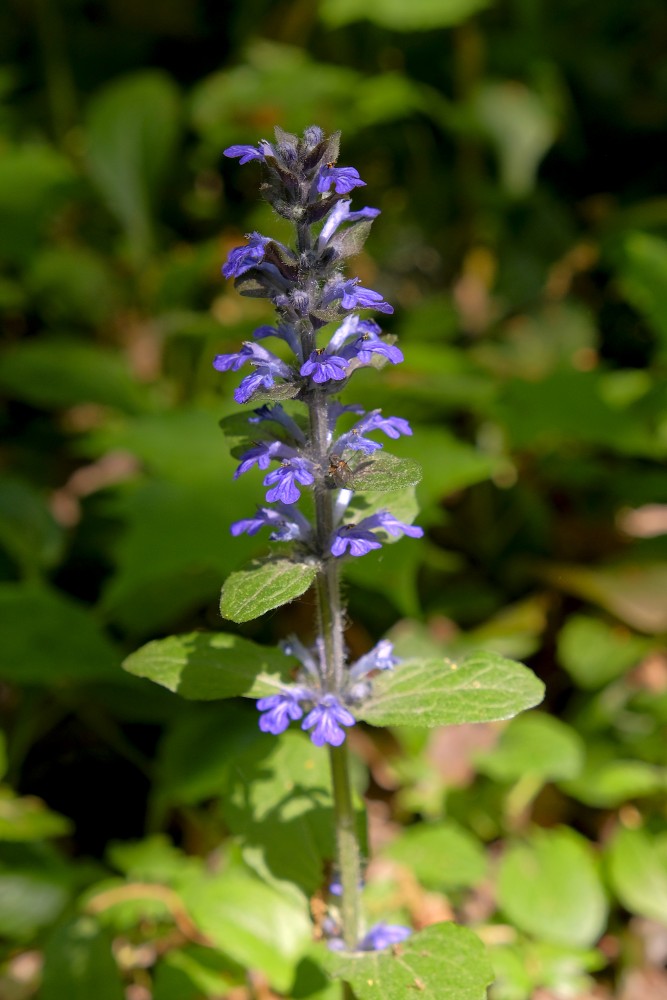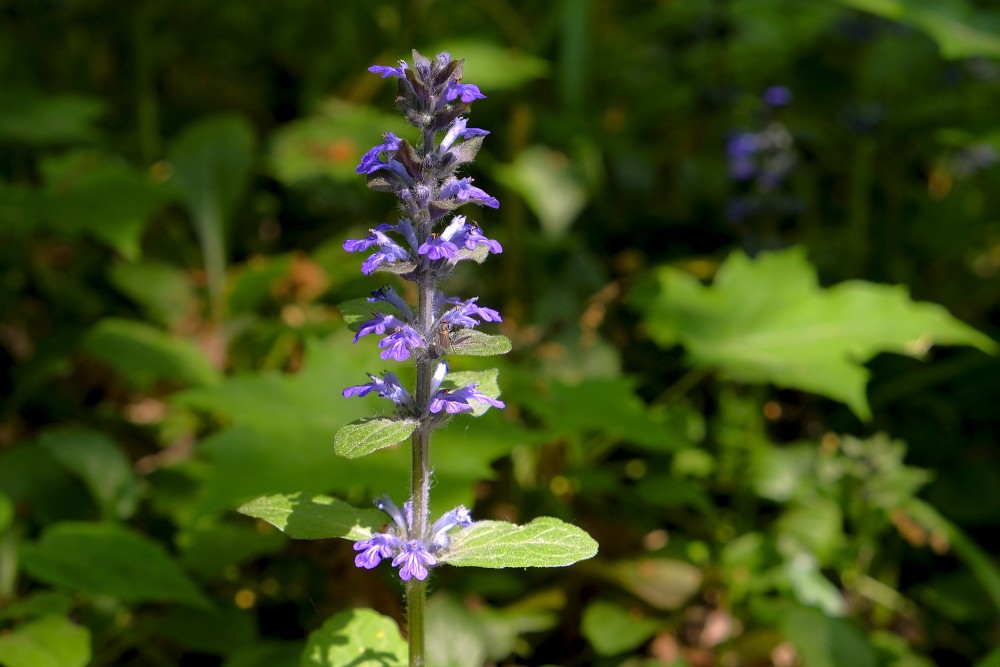Ajuga reptans
Ajuga reptans is commonly known as bugle, blue bugle, bugleherb, bugleweed, carpetweed, carpet bugleweed, and common bugle, and traditionally however less commonly as St. Lawrence plant. It is an herbaceous flowering plant in the mint family Lamiaceae, native to Europe. It is invasive in parts of North America. It is also a component of purple moor grass and rush pastures, a Biodiversity Action Plan habitat in the United Kingdom.
Ajuga reptans is a dense spreading groundcover with dark green leaves with purple highlights. The leaves grow 5–8 cm (2.0–3.1 in) tall. In spring the plant sends up 10–15 cm (3.9–5.9 in) tall flower stalks bearing many purple flowers. The flowers are frequently visited by flies, such as Rhingia campestris.
Description
Ajuga reptans is a sprawling perennial herb with erect flowering stems and grows to a height of about 10 to 35 cm (4 to 14 in). The stems are square in cross-section with hairs on two sides. The plant has runners that spread across the surface of the ground. The purplish-green, stalked leaves are in opposite pairs. The leaf blades are hairless and are elliptical or ovate with a rounded tip and shallowly rounded teeth on the margin. The inflorescence forms a dense raceme composed of whorls of blue flowers, each with dark veins on the lower lip. The calyx has five toothed lobes and the corolla forms a two-lipped flower about 14 to 17 mm (0.6 to 0.7 in) long with a short tube. The upper lip of each flower is short and flat with a smooth edge, and the lower lip is three-lobed, the central lobe being the largest, flat with a notched tip. There are four stamens, two long and two short, which are longer than the corolla and are attached to the tube. The ovary is superior and the fruit is a schizocarp with four chambers.
en.wikipedia.org

